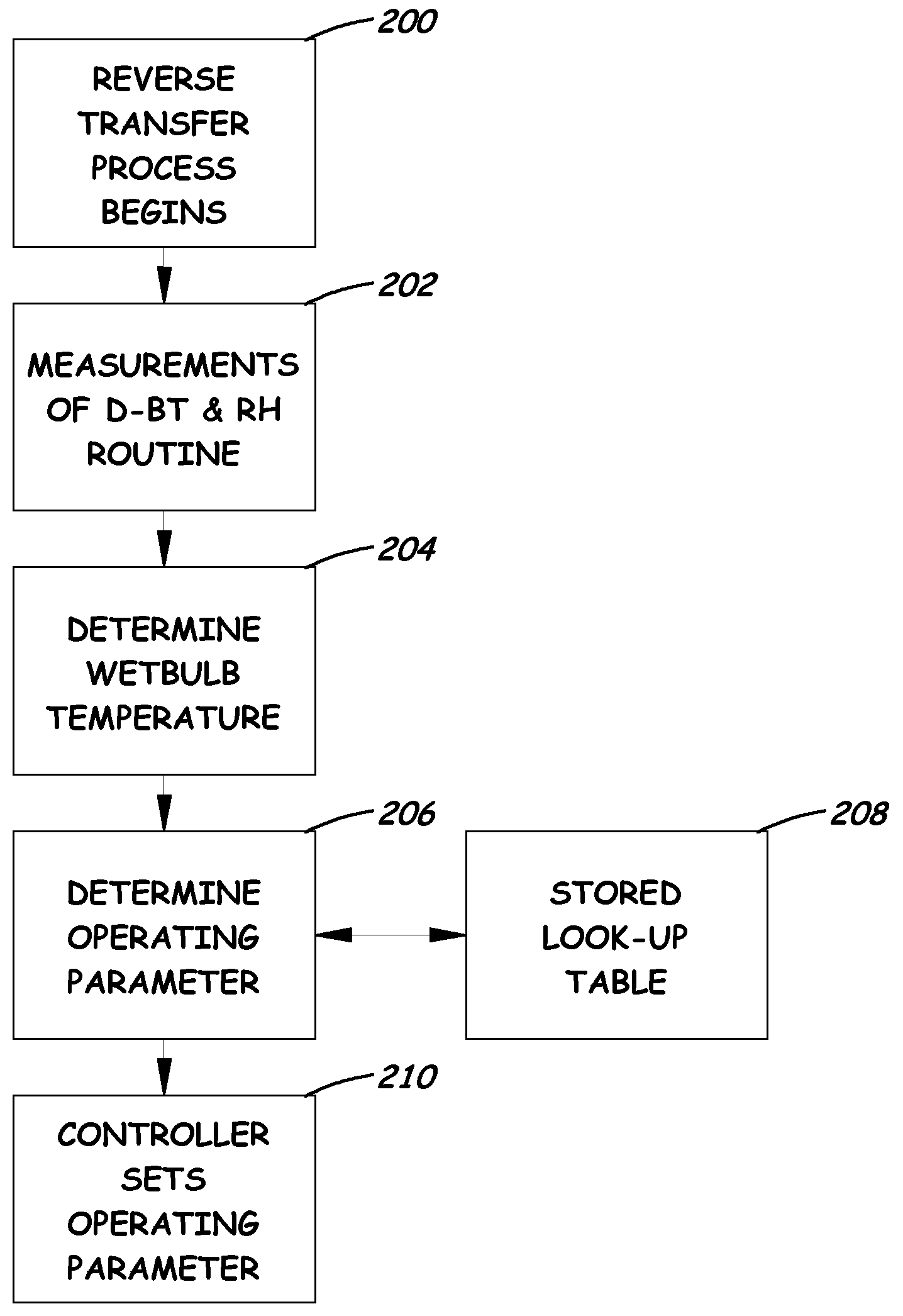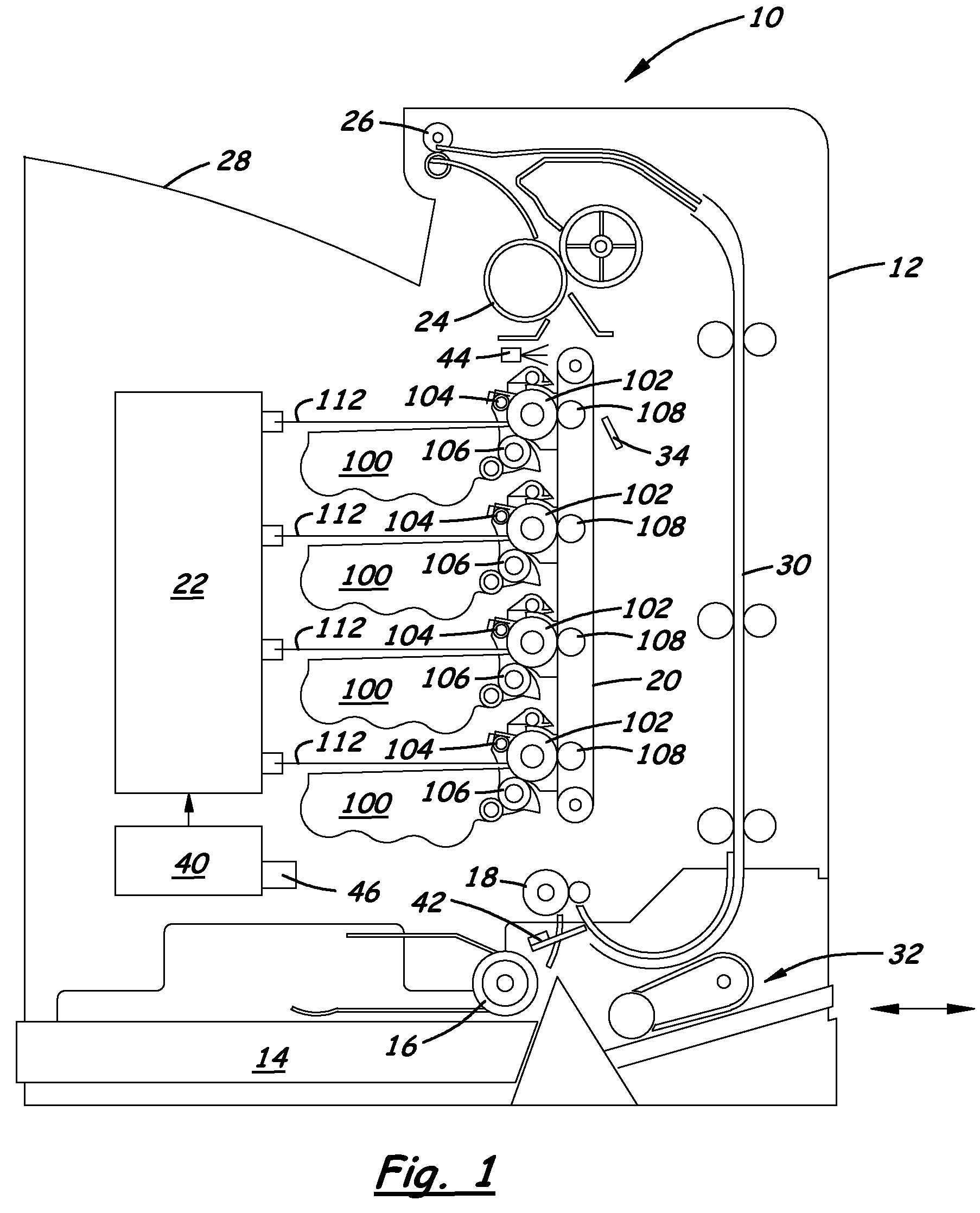System and Method for Adjusting Selected Operating Parameters of Image Forming Device Based on Selected Environmental Conditions to Improve Color Registration
an image forming device and operating parameter technology, applied in the field of ep image forming devices, can solve the problems of large difference between the potential of the developer roll and the charge on the pc drum surface, the failure of the interface between the developer roll and the pc drum, and the inability to control tolerances and wear, etc., to achieve better print quality and color registration, improve color registration, and optimize the voltage of the charge roll
- Summary
- Abstract
- Description
- Claims
- Application Information
AI Technical Summary
Benefits of technology
Problems solved by technology
Method used
Image
Examples
Embodiment Construction
[0022]The present invention now will be described more fully hereinafter with reference to the accompanying drawings, in which some, but not all embodiments of the invention are shown. Indeed, the invention may be embodied in many different forms and should not be construed as limited to the embodiments set forth herein; rather, these embodiments are provided so that this disclosure will satisfy applicable legal requirements. Like numerals refer to like elements throughout the views.
[0023]Referring now to FIG. 1, there is schematically illustrated an EP image forming device, generally designated 10, to which the system and method of the present invention are applicable. The exemplary image forming device 10, which is a laser printer, includes a main body 12, at least one media tray 14, a pick mechanism 16, a registration roller 18, a media transport belt 20, a laser printhead 22, a plurality of image forming stations 100, a fuser roller 24, exit rollers 26, an output tray 28, a dupl...
PUM
 Login to View More
Login to View More Abstract
Description
Claims
Application Information
 Login to View More
Login to View More - R&D
- Intellectual Property
- Life Sciences
- Materials
- Tech Scout
- Unparalleled Data Quality
- Higher Quality Content
- 60% Fewer Hallucinations
Browse by: Latest US Patents, China's latest patents, Technical Efficacy Thesaurus, Application Domain, Technology Topic, Popular Technical Reports.
© 2025 PatSnap. All rights reserved.Legal|Privacy policy|Modern Slavery Act Transparency Statement|Sitemap|About US| Contact US: help@patsnap.com



